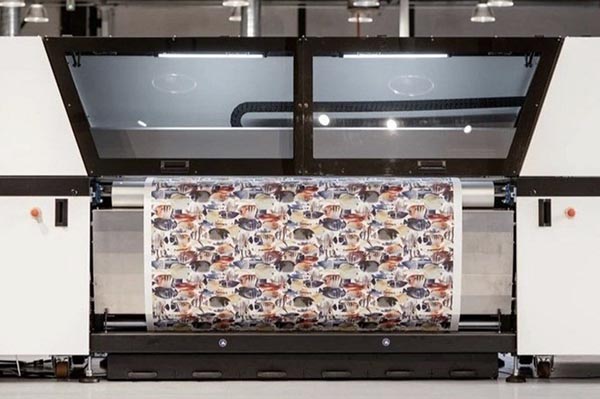In this article, compliments of textiles expert and WhatTheyThink contributor Debbie McKeegan, she provides an update on digital textile printing via Future Markets research, and also explains why increased interest in custom home and interior décor is poised to further spur market growth for digital textile printing. The digital share of textile printing is still around 10%.

(Image courtesy Texintel.
The global digital textile printer industry is estimated to reach US$2,212.9 million in 2023 according to Future Market Insights. Global sales of digital textile printing are forecast to grow 9.8% per year between 2023 and 2033. By 2033, the market is expected to be valued at US$5,304.3 millions.
Growth in the market is driven by continuously changing fashion trends, a high need for advanced printing technologies, and increasing demand for customized and personalized home décor.
The Market for Custom Textiles in the Home Décor and Furnishing Sector Is Experiencing Rapid Growth
People today prefer exclusive and fast fashion products that they can customize and personalize according to their needs. Customers are willing to pay premium prices and actively seek out platforms and brands that cater to their custom home décor needs.
This trend is especially evident because Gen Z has a greater purchasing power and prefers online shopping. The demand for printed furniture materials is high. Home furnishings such as curtains and upholstery fabrics are in high demand. The adoption of digital textile printing is a result.
Digital textile printing has emerged as the ideal solution for customizing home textiles. They allow you to print specific patterns, designs, colors and even photos. Digital printing is gaining popularity in the home interiors market due to its personalization capabilities.
Consumers’ shift to online shopping is another key factor driving the global digital textile printer industry.
Today’s consumers have elevated expectations, seeking pleasant and personalized shopping experiences and affordable and high-quality clothing aligned with seasonal trends. Online shopping platforms meet these expectations with attractive offerings such as seasonal sales, diverse apparel choices and other appealing offers. The growing need for fast fashion increases the importance of digital fabric printers within the fashion industry. Additionally, the shift to online shopping and customer preferences will accelerate market growth.
Digital Textile Printer Market Research Report: Key Takeaways
- Globally, the digital textile printer market is expected to reach US$5,304.3 millions by 2033.
- The pigment segment, based on ink sales, is expected to grow at a CAGR between 11.1% and 2033.
- In 2023, direct-to garment segment will have a share of the market around 50.2%.
- By 2033, it is estimated that the clothing and fashion segment will reach US$3,474.0million in value.
- By 2033, the digital textile market in the United States is expected to reach US$568.0 millions.
- The demand for digital textile printers in India is expected to grow at a CAGR of 8.8% during the assessment period.
“Growing concerns over sustainability in the printing sector have increased demand for digital textile printers. Digital textile printers allow for greater design flexibility, and they can produce faster. Globally, digital textile printers are widely used. Key companies are looking to develop advanced printing equipment to expand their customer base,” says a lead analyst at FMI
Digital textile printing has several advantages over traditional dyeing. It reduces waste, and it also addresses the water pollution that dyeing causes, which is the second largest global polluter of water. The agility and flexibility of textile printing and digital production allows manufacturers to handle small boutique orders as well as large retail orders with the same equipment. This makes it a very attractive option.
Print-on-Demand and a lower price per print make it possible to produce large quantities quickly, while ensuring profitability. Digital textile printing offers designers nearly unlimited graphic and color options, far surpassing traditional print technologies. Designers can now unleash their creativity to create unique designs.
Benefits extend to the entire supply chain.
Digital printing makes it easier to meet production and shipping deadlines, which prevents overstocking. Designers can constantly produce new collections to keep up with ever-changing fashion trends, while customers can satisfy their desire for customized apparel, décor, and gift items.
www.texintel.com